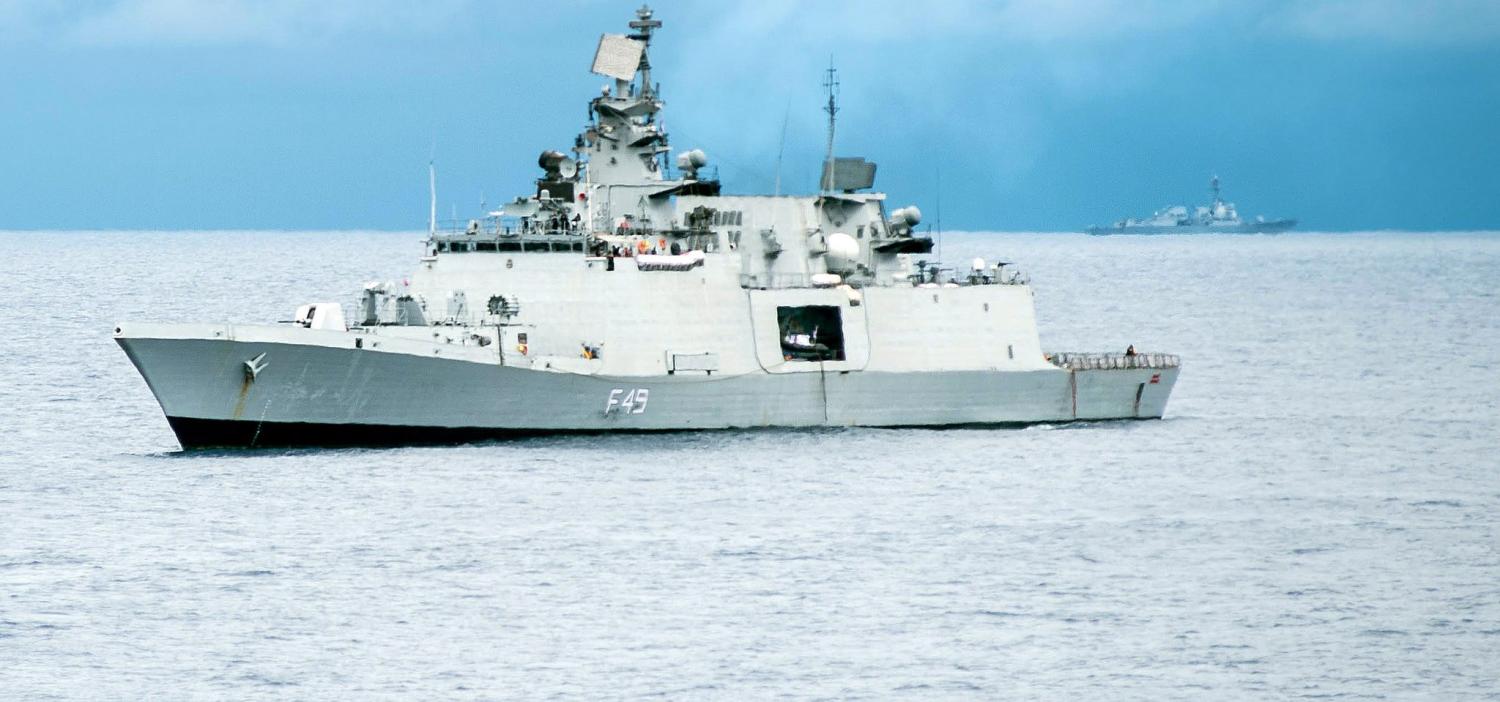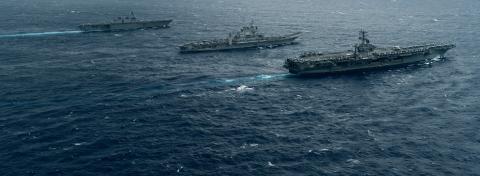At a biannual naval commanders’ conference in New Delhi last week, the Indian Navy’s top leadership cleared a new maritime deployment plan. In a bid to counter emerging challenges in the Indian Ocean littorals - in particular, the growing presence of Chinese warships and submarines in India’s near seas - senior commanders backed a proposal for the prolonged deployment of warships in critical and vulnerable spaces in the Indian Ocean.
The 'new mission-based deployment' plan involves the deployment of combat-ready ships and aircraft along important sea-lanes of communications and 'choke points' in the Indian Ocean, from the Persian Gulf and Gulf of Aden to the Malacca Strait and Sunda Strait. According to the navy’s spokesperson, 12 to 15 destroyers, frigates, corvettes and large patrol vessels are now permanently positioned in the IOR, supported by naval satellite Rukmini (GSAT-7) and daily sorties by Poseidon P-8I maritime patrol aircraft.
India’s naval leadership expects the new warship deployments to burnish the Indian Navy’s credentials as an ‘outcome-oriented’ security provider in the Indian Ocean. Maritime watchers believe active surveillance by Indian ships and aircraft, coupled with regular exercises with partner navies, can deter Chinese naval ships and submarines from making frequent forays into India’s near-seas. Over time, they suggest, aggressive patrols by the Indian Navy and partner maritime forces in the near seas could deny the PLA Navy the use of subcontinent littorals.
Yet, as compelling as the assessment outwardly appears, the notion that Indian naval power can prevent Chinese warships and submarines from accessing India’s near seas is inherently flawed. Trading nations regard the oceans as a shared global commons, with equal-opportunity rights for all user states. Unless a sea-space is a site of overlapping claims (as in the case of the South China Sea) or a contested enclave in a geopolitically troubled spot (as in the Persian Gulf), no coastal state ever seeks to openly deny another the use of the high seas. This balance only changes during war, when navies try to block adversaries from entering critical sea spaces in the contested littorals. During peacetime operations, however, maritime forces enjoy assured access to the seas that lie beyond national territorial waters, even if a coastal state insists on prior notification.
A strategy aimed at denying Chinese warships entry into India’s surrounding seas is also unlikely to succeed because the Indian Navy’s capacity for active defense has eroded in recent years. Naval commanders acknowledged last week that critical capability shortfalls in multi-role helicopters, conventional submarines and mine counter-measure vessels needed concerted policy attention. Moreover, India’s anti-China maritime posture in the Indian Ocean does not appear to enjoy much support in South Asia. Much to New Delhi’s chagrin, Beijing’s infrastructure and investment initiatives in the Indian Ocean have been welcomed by regional states, some of whom have openly embraced China’s Belt and Road Initiative.
The ideal course for New Delhi would be to emulate Beijing’s maritime playbook by leveraging naval operations in the Asia Pacific for political gains. In recent years, the Chinese navy has sought to project power in the Indian Ocean through a constant naval presence in India’s near seas. By refusing to accept the Indian Ocean as an Indian backwater, the PLA Navy has made inroads into India’s geopolitical sphere of influence. India’s response must be through a strategy of counter power-projection in the South China Sea, long considered a Chinese preserve.
The process might already be underway, with a recent surge in India’s eastern naval deployments. Speaking at the naval commanders’ conference last week, Defence minister Nirmala Sitharaman acknowledged the Indian Navy’s 'high operational tempo' had resulted in a maritime presence across the Indo-Pacific space. New Delhi’s Act East naval push is evident from the recent three-month deployment of INS Satpura and INS Kadmatt to East and Southeast Asia. The warships commemorated 25 years of India-ASEAN partnership by attending an International Fleet Review hosted by the ASEAN in Thailand, following up with visits to Singapore, Vietnam, Philippines, Cambodia, Malaysia, Brunei, Japan and Russia.
Still, India’s maritime deployments in the Pacific do not display the intensity and vigour associated with an active naval projection strategy. Unlike the Indian Navy’s active operational posture in South Asia (focused increasingly on anti-submarine operations), India’s naval contingents in Southeast Asia have confined themselves to the benign and constabulary end of the operational spectrum. Compared to maritime exercises by other powerful Indo-Pacific states, India’s naval interactions in Southeast Asia remain vastly below par.
India has little option but to expand its naval engagements in the Asia Pacific. Upping the tempo of its Pacific operations would enable the projection of naval power in Southeast Asia’s sensitive littorals, also raising New Delhi’s strategic profile in the neighbouthood. This is more than a theoretical proposition. India’s maritime presence in the Western Pacific creates complications for Beijing much in the way PLA Navy operations in the Indian Ocean restrict India’s strategic choices. Yet China’s political and territorial ambitions in the South China Sea make it far more sensitive to naval forays by unfriendly states, implying that the Indian Navy’s operations in Southeast Asia are likely to more effective than Indian analysts expect.
Japan’s proposal for a new quadrilateral dialogue on the sidelines of the East Asia Summit in Philippines later this month should nudge New Delhi into thinking hard about the benefits of assuming robust naval posture in wider Asia. At the same time, India’s political leadership must repose greater strategic confidence in Australia, who many Indian analysts wrongly hold responsible for the failure of the quadrilateral in 2007.
To deter China from operating in the Indian Ocean, Indian naval commanders need to leverage China’s vulnerability in its near seas. The Indian Navy’s Western Pacific operations, however, must be calibrated to ensure the Indian Navy does not accidentally cross the threshold of provocation to conflict with China. More crucially, Indian naval commanders will need to plan for counter-presence in China’s near seas in such a way that Beijing cannot prove a territorial infringement, even while feeling the pressure of a perceived violation of its sphere of influence.
Photo by Flickr user US Pacific Fleet.

